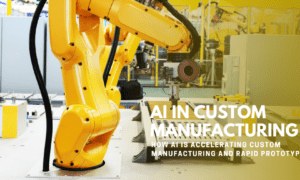In 2025, artificial intelligence isn’t a novelty anymore, it’s infrastructure. Every major company is either deploying AI or planning to, but one question still causes hesitation: how much does it actually cost to build an AI system today?
The short answer: less than it used to, but more complicated than you think.
The past two years have redefined what “building AI” means. With models like GPT-4o, Claude 3, Gemini 2.0, and DeepSeek V3, it’s no longer necessary, or even economical, to train custom models from scratch. Instead, businesses now assemble systems using prebuilt LLMs, cloud APIs, and orchestration layers, effectively engineering intelligence rather than inventing it.
That shift has democratized access to powerful AI, but it has also turned cost forecasting into a new kind of puzzle.
Why AI Pricing Is So Confusing
Unlike traditional software, AI usage costs scale with every interaction. The more your system talks, reads, or reasons, the more it costs. That’s because most modern AI tools are powered by hosted large language models (LLMs) billed on a per-token basis.
Tokens are the atomic units of LLM communication, a few characters or part of a word. Every prompt and every response consumes them. Most providers charge per 1,000 tokens, roughly equivalent to 750 words.
Here’s what typical pricing looks like in 2025:
| Model | Cost per 1K tokens (input) | Cost per 1K tokens (output) |
| GPT-4o (OpenAI) | ~$0.005 | ~$0.015 |
| Claude 3 Sonnet (Anthropic) | ~$3.00 per 1M | Included |
| Gemini 2.0 Pro (Google) | ~$3–$5 per 1M | Included |
| DeepSeek V3 | ~$0.50–$1.50 per 1M | Included |
Those numbers look tiny until your system starts processing thousands of documents or serving hundreds of users daily. At scale, token costs often dominate the monthly budget.
Beyond Tokens: The Other Hidden Costs
LLMs are just the tip of the AI cost iceberg. Real-world systems involve additional components that quietly add up.
- Document and Vision APIs
If your product processes invoices, forms, or contracts, you’ll need document intelligence or OCR (optical character recognition) tools. These APIs, from providers like Azure, AWS, and Google, charge per page or document, typically around $10 per 1,000 pages.
When combined with LLM reasoning (e.g., summarizing or validating parsed data), the blended cost usually lands between $15–$25 per 1,000 documents.
- Infrastructure and Orchestration
Even if the AI model is hosted elsewhere, you still pay for the machinery connecting it all. Cloud infrastructure handles request routing, storage, vector search (for retrieval-augmented generation, or RAG), and monitoring.
Depending on architecture, cloud costs can range from $100 to over $2,000 per month, covering compute power, network traffic, and data storage.
- Development and Maintenance
Building an AI system isn’t just about wiring APIs together. There’s prompt engineering, backend logic, user interfaces, and, crucially, iteration.
Most teams budget 10–20% of the initial development cost annually for optimization, bug fixes, and adapting to new model versions. These tasks are often handled by specialists offering custom AI development services, ensuring systems stay efficient as APIs and pricing evolve.
How the Numbers Stack Up
By combining these elements, a few benchmark cost tiers emerge:
| Use Case | Typical Monthly Cost |
| Basic GPT-4o chatbot | $500–$2,000 |
| Document parser + summarizer (LLM + OCR) | $2,000–$8,000 |
| Enterprise RAG system with integrations | $10,000–$50,000+ |
These ranges assume moderate usage. Costs scale linearly with volume, meaning a chatbot serving 1,000 customers could cost 10x more than one serving 100.
The Main Cost Variables
AI pricing might look arbitrary, but it boils down to a few predictable levers.
Usage Volume
The number of tokens processed is the single biggest driver. Every document, question, or analysis session consumes tokens, and every output multiplies that count. Systems that handle large datasets or long documents naturally pay more.
Model Selection
Not all models are priced (or perform) equally. Premium options like GPT-4o and Claude Opus deliver exceptional reasoning and multimodal capabilities, but smaller models like Claude Haiku or DeepSeek V3 can handle focused tasks for a fraction of the price. Choosing the right model for each workflow is one of the easiest ways to keep costs under control.
Context Size and Complexity
Longer inputs, such as 100-page reports or full conversations, require larger context windows, and therefore more tokens. Some models now support up to 128K tokens per request, enabling deeper understanding but also multiplying costs. Chunking large inputs into smaller segments is a simple but powerful optimization strategy.
Document Quality
OCR systems charge per page, but complexity matters. Clean, digital PDFs are cheap to parse; scanned or handwritten documents are not. Messy data forces additional LLM reasoning, which adds cost and latency.
Compliance and Security
Enterprises operating in regulated sectors (finance, healthcare, government) must implement encryption, access control, and audit logging. These features often require extra infrastructure and human oversight, increasing both development and operating costs.
Maintenance
AI systems are dynamic. Model updates, new APIs, and evolving business goals require ongoing tuning. Without it, performance and accuracy quickly degrade.
Example: The Price of Document AI Pipelines
AI document recognition has quietly become one of the most common (and expensive) LLM applications. A typical 2025 setup pairs OCR tools with an LLM for reasoning and summarization.
Here’s how that breaks down:
| Configuration | Est. Cost (per 1,000 docs) | Best For |
| Azure Document Intelligence | ~$10 | Invoices, IDs, forms |
| GPT-4o + Azure OCR | ~$15–$25 | Complex multi-page workflows |
| Google Document AI | ~$10–$20 | Financial and multilingual docs |
| Gemini 2.0 Pro + OCR | ~$5–$8 | Google Cloud-native automation |
| DeepSeek V3 + Azure OCR | ~$12–$15 | Cost-efficient, multilingual setups |
These pipelines are modular: components can be swapped depending on accuracy, cost tolerance, and infrastructure preference. For startups, this flexibility can mean the difference between spending $500 or $5,000 a month.
Estimating an AI Project Budget
There’s no universal pricing calculator, but most teams start with three questions:
- How often will the system be used? Estimate the number of user interactions or documents per month and average tokens per interaction.
- What architecture is required? Identify whether the project needs a frontend (chat interface or dashboard), backend logic, databases, or vector search. Each adds incremental cost.
- What level of optimization is needed? Production systems require logging, monitoring, and periodic tuning. Reserve a percentage of the initial budget for these ongoing adjustments.
A small internal chatbot might run comfortably under $1,000 per month, while a document-heavy enterprise pipeline could exceed $10,000. What matters isn’t the absolute number, but whether costs scale proportionally with business value.
AI Pricing Trends to Watch
The AI pricing landscape is maturing and stabilizing fast.
- Costs are dropping, but efficiency matters more.
Competition among providers is driving token prices down. But as models become multimodal and support longer contexts, efficiency in how those tokens are used is becoming more important than raw pricing.
- Specialized models are rising.
Smaller, domain-specific models are proving both faster and cheaper than general-purpose ones for narrow tasks like classification, translation, or summarization. Expect continued momentum toward fit-for-purpose AI.
- Hybrid architectures are becoming standard.
Enterprises increasingly mix and match models: small ones for pre-processing, larger ones for reasoning. This layered approach reduces cost while maintaining quality.
- Transparency is improving.
Vendors are finally offering clearer usage dashboards and enterprise-friendly billing models. Expect more usage-based bundles and volume discounts in 2025 and beyond.



































